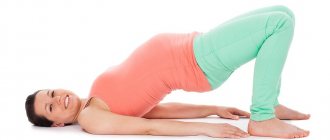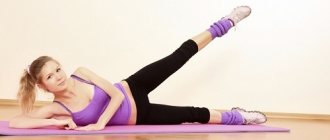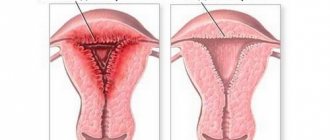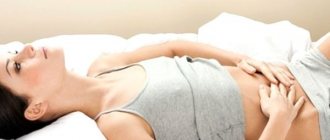How to soften the symptoms of menopause
Menopause is just a physiological process associated with age-related and hormonal changes in a woman’s body. True, it is often accompanied by very unpleasant and painful symptoms. But if we understand what is happening in our body and learn to help it, it will not be necessary to fall out of a full life for years. From about 35, the ovaries produce less and less estrogen (the hormone necessary for ovulation and conception) every year. The menstrual cycle becomes irregular. This continues until menstruation stops, which means the female body is no longer capable of conceiving. This period is called menopause, or menopause. It occurs at the age of 51 (on average), but can occur either earlier or later, between 40-55 years. The onset of menopause depends primarily on a woman’s heredity. The onset of the “female break” can be accelerated by underweight, obesity, previous sexually transmitted infections, smoking and irregular sex life. Hot flashes are considered the most common symptom of menopause: 3 out of 4 women experience them. This is a sudden feeling of heat in the chest, redness of the neck, face, hands, increased sweating, which is replaced by chills. Attacks occur on average once an hour and last 3-4 minutes. A drop in estrogen levels slows down your metabolism and contributes to weight gain. Women notice that their skin is no longer as elastic, dryness appears in the vagina, and urinary incontinence becomes more frequent. Often, changes in hormonal levels turn a woman into a hysterical, irritable, always tired and dissatisfied person, and can even cause depression.
To meet menopause fully armed, you need to remember the following: • the cessation of menstruation does not mean the onset of old age; • these are natural changes in ovarian function; • it takes time for the body to adapt to subsequent changes in the functions of all systems and organs. At the onset of menopause, some women experience general weakness, lethargy, agitation, and mental changes. Sometimes excess fat is deposited in the abdomen and thighs. With a sedentary lifestyle, joint problems may occur. Sometimes sweating and a rush of blood to the head occur. All these phenomena contribute to the frequent occurrence of sad thoughts. It begins to seem that existing diseases are intensifying and aggravating. Sometimes the discharge in the genital area increases and a feeling of itching appears. This restructuring of the body can be resisted and facilitated in a number of ways known since ancient times. Walk in the forest more often, take air and sun baths. Daily rubbing with cool water, showering or regular lavender baths are recommended. When preparing them, 2–4 drops of lavender oil are dissolved in 10 g of alcohol and this solution is poured into water. Limit or eliminate the consumption of fatty and starchy foods, alcohol, strong coffee, spices, and limit the consumption of salty foods. To eliminate constipation, you should choose a diet or regularly use laxatives.
Benefits of yoga during menopause
Yoga is good primarily because asanas and breathing practices have a powerful healing effect not only on muscle and bone tissue, but also on internal organs and hormonal glands. This ancient system of exercise reduces the occurrence of adverse effects of hormonal changes during menopause by restoring the balance of the endocrine system. Yoga balances the hormonal changes characteristic of this period. Regular practice of all types of postures: standing, sitting, lying, bending back and forth, twisting and inversions stimulate and activate all the glands, organs, connective tissues and cells of the body. Inverted asanas are especially important during menopause as they have a profound effect on the neuroendocrine system, allowing fresh, oxygenated blood to flow purposefully to the glands located in the head and neck. In each yoga pose (asana), different organs and glands are located in different anatomical positions, which contributes to their better blood supply, oxygen saturation, and gentle massage; As a result, a relaxation effect is achieved, while - due to light stimulation - the necessary tone is maintained. It is important to keep in mind that all the symptoms of menopause are interconnected, that is, if you start doing yoga to reduce the occurrence of one unpleasant symptom, this generally leads to a healthier body. Each asana has a huge number of effects on all body systems.
Linden tea will ease menopause
If you are over 40 years old, you should definitely drink a cup of linden tea, brewed in the usual way, in the morning for 4-6 weeks. This cycle should be repeated every 5–6 months. Menopause will come much later than for your peers, and it will pass without any problems. Naturopaths recommend drinking linden tea with a teaspoon of honey at night, and taking royal jelly from bees in the morning to maintain energy balance in the body.
Traditional recipes for menopause
• Pour 2 tbsp into an enamel bowl. spoons of cinnamon rose hips and 1 tbsp. spoon of wild strawberries, pour 3 cups of boiling water and keep covered for 30 minutes. Strain and take 1/2 cup 2 times a day. Menopause will pass asymptomatically, and female beauty will not leave you so quickly. • This tincture will help against hot flashes, headaches and other menopausal troubles: grind and mix 20 g of woodruff and motherwort herbs, 25 g of blackberry leaves, 15 g of marsh grass and 10 g of hawthorn flowers, brew and drink instead of water no more than 10 days.
Exercises for menopause
The starting position for all exercises (except for the 7th) is lying on your back, arms extended along the body, legs straight. 1. Open your eyes wide, then close them and look ahead again. Isn't it simple? However, these simple movements activate physiological processes that are reduced during sleep. 2. Inhale deeply, flare your nostrils as much as possible, wrinkling your nose, and exhale forcefully. It seems like they didn’t do anything special, but the effect was amazing: the air stream produced a vibration massage of biologically active points on the mucous membrane of the nasal cavity, causing a surge of strength and a feeling of vigor. 3. Place your palms on the back of your head and, slowly moving your fingers, massage it from top to bottom. Now the occipital muscles have relaxed, the lumen of the blood vessels has become wider, this will help avoid hot flashes. 4. For a minute, at a fast pace (one movement per second), move your feet as if walking in place. Then clench and unclench your toes synchronously for another minute. Finally, rotate your feet clockwise and counterclockwise for half a minute. This exercise has a beneficial effect on the veins of the legs and serves as a prevention of their pathological expansion - varicose veins. 5. Perform several circular movements with your pelvis in different directions. This exercise strengthens the back muscles and normalizes blood circulation in the pelvic area, where the genital organs are located. 6. Sit in bed, pull your bent legs to your chest, clasp them with your arms and rock back and forth for a minute. According to experts, such swings improve digestion. 7. Lie on your back again, bend your arms and place them on the pit of your stomach. Now close your eyes, relax, and on the count of “one,” inhale through your nose, inflating your stomach. On the count of “two or three”, hold your breath, “four” - exhale through the nose with the active participation of the abdominal press, after which again hold your breath for as long as you can. Exercise strengthens the diaphragm, improves liver and heart function, and also trains the vessels of the upper body, reducing the frequency of hot flashes.
A start
If until now your activity has been minimal, then a sudden sports start is definitely not for you. To begin with, doctors recommend giving preference to calm and measured workouts, which help to work on problem areas and allow you to maintain your figure.
The following are considered useful:
- morning work-out;
- aerobics;
- swimming.
Exercise in the morning
Morning warm-up exercises should consist of complexes that involve the neck and shoulder girdle, arms, back, stomach and legs.
- Start by stretching the joints of your arms, fingers and toes. Swings and rotations will help you do this. Perform head tilts to the right and left, and then circular movements that will stretch the muscles of the cervical region.
- Bends of the body are mandatory: lateral bends develop the oblique abdominal muscles, forward and backward help strengthen the spine.
- The complex of morning exercises includes squats: with their help, the thigh muscles are trained and the knee joints are warmed up.
You can intensify your morning exercises with “blows” on the most problematic area for women - the stomach. To do this, perform abdominal exercises: “bicycle”, and also, lying on your back, raise your legs at a right angle or bend your knees and pull them to your waist.
Walk or run
Running is useful at any age: during aerobic training, a lot of energy and calories are spent, weight loss occurs, and the figure becomes toned. The muscles, blood vessels and joints of the legs are strengthened. Among other things, your mood improves: the happiness hormone, endorphin, contributes.
If a woman over 50 chooses running, she needs to know:
- Before exercising, you should obtain a doctor’s approval: it is possible that your health indicators do not allow you to overload the body, especially if you have sore joints and serious problems with the functioning of the cardiovascular system.
- Each workout must be preceded by a warm-up: you need to warm up your muscles by walking in place for five minutes, and also stretch your joints.
- Finish your exercise routine with stretching to relieve tension and relax your muscles.
- Choose a track or grass for jogging.
- The “outfit” must be special: clothes made from natural fabrics, shoes with soft soles that thicken towards the heel. In cold weather, wear a hat and a comfortable jacket.
If you haven't run before, start with an active walk, gradually increasing the load, distance and speed. Nordic walking is considered a popular activity. It stimulates metabolism and uses almost the entire body.
A heart rate monitor specifically purchased for training will allow you to measure your heart rate and monitor changes in its rhythm.
For those for whom running is contraindicated, there is an alternative - walking. Regular walking helps improve the functioning of the cardiovascular system, tone muscles, control body weight, and also helps fight osteoporosis. In addition, the walk can take place in any weather and in any area, alone or in a pleasant company.
Head to the pool
Swimming is a way not only to lose extra pounds, but also to strengthen the spine, joints, and correct posture. The advantage is that during the training period all muscle groups are involved, and the load is not strongly felt.
Going to the pool is beneficial for asthmatics: the moisture helps improve breathing. In addition, you will forget about problems associated with blood pressure: during swimming it returns to normal.
Do not stay in cool water for long, especially if you suffer from kidney disease.
Yoga relieves stress
Yoga helps to activate tissue regeneration processes and slow down their destruction. In addition, a big advantage of such classes is regularity and efficiency.
The main exercises for women after 50 are performed standing, since one of the key tasks at this age is to strengthen the legs. In addition, bends and turns, smooth movements have a beneficial effect on the spine. A special place is given to stretching: the flexibility of the body gives a feeling of harmony.
Older ladies are advised to be very careful: do not immediately perform complex exercises, but start with simple techniques.
Regular exercise helps a woman lower blood pressure, regulate heart rate, restore mental balance and maintain good spirits. Yoga is especially important during menopause: it relieves anxiety and relieves depression.
It is generally accepted that stretching helps in the fight against spinal diseases. However, before choosing this type of physical activity, consult your doctor.
How to feel better
A balm that helps improve well-being during menopause. Mix 100 g of rose hips, 50 g of hawthorn flowers, 4 tbsp. spoons of oregano herb, 1 tbsp. a spoonful of valerian roots (all in dry form) and 2 teaspoons of aloe extract (sold in a pharmacy). Pour the mixture into an enamel pan with 3 liters of hot water, leave for an hour. Then bring to a boil and simmer over low heat for about 2 hours. Infuse for a day, wrapping the dishes in a blanket. After this, add 0.5 kg of honey and 250 ml of vodka. Mix everything thoroughly and pour into glass jars. You need to store the balm in the refrigerator, where it does not spoil for a long time. In the first week, take 1 teaspoon of the product 3 times a day, and starting from the second week - 2 teaspoons. Gradually increase the dose and bring it to 1 tbsp. spoons per dose 3 times a day. The course of treatment is 30 days, then you need to take a break for 10 days. Carry out 2 more courses with a break of 2 weeks.
Only benefit
Regular exercise is a way to improve the functioning of a woman’s body: speed up metabolism, improve blood circulation, normalize blood pressure and prevent the development of various diseases. You will notice how your muscles become toned and your bones become stronger. Ligaments and tendons will become more elastic, and therefore joints will increase mobility.
In addition, thanks to exercises during menopause and hot flashes, your psychological state will improve.
Before you start exercising, consult your doctor. The doctor will conduct an examination, assess the condition of your body and help determine the level of physical activity.
Follow the rules
Before playing sports, listen to the advice of experts:
- Train regularly: once you start, don’t stop.
- Choose the type of physical activity wisely. For older women, the optimal solution is water aerobics, exercise on fitballs, as well as yoga, callanetics, Pilates, and qigong. Muscle stretching exercises are helpful. Cardio training also has a good effect.
- Choose a moderate pace. Don’t try to keep up with the young, better study the programs that exist for women of your age. Ideally, seek the help of an instructor who will select for you, for example, exercises for weight loss, while taking into account existing diseases and contraindications.
- It is important to distribute the load: all muscle groups should be used approximately equally.
- Pay attention to the duration and number of classes. Don’t overdo it, otherwise the desire to visit the gym will soon go away.
Remember that, in addition to physical activity, it is important for the body to relax and recover. Therefore, take at least 2 days to rest, especially between strength training sessions.
Review your diet during menopause
Along with menopause, a new stage of life begins for every woman. To make the transition period painless, it is necessary not only to change your usual lifestyle, but also to carefully monitor your diet. The fact is that due to hormonal fluctuations during menopause, a woman can gain more than 10 kg of excess weight in six months, which threatens various diseases. But this does not mean at all that during menopause you need to go on a strict diet. On the contrary, fasting during this period is extremely harmful for a woman. You just need to create a balanced diet and always stick to it. To begin with, eliminate from your menu foods containing “bad” fats: processed cheese, glazed cheese curds, ice cream, smoked products (sausages and sausages), mayonnaise, fast food, baked goods, halva and butter. Avoid fatty meats. During menopause, there is a risk of developing diabetes, so limit the consumption of easily digestible carbohydrates - sugar, caramel, jam, white and milk chocolate. Remember that fried food is poison. Prepare dishes by steaming, stewing, baking, boiling. Spicy seasonings increase hot flashes and mood swings. Alcohol, coffee and smoking impair the absorption of hormones and also contribute to the leaching of calcium from the body. When composing your diet, do not forget that during menopause, due to a decrease in the amount of estrogen, bones in women become very fragile and can break even with a small load or a weak blow. To prevent bone mass from decreasing and osteoporosis from developing, you need to eat foods rich in calcium and vitamin D, which helps the body absorb this microelement. A lot of calcium is found in milk, cottage cheese, sour cream, hard cheeses, lactic acid products, eggs, fish, and garden herbs. Fish and seafood are rich in vitamin D; you can also take fish oil in capsules. Try to eat such foods every day, but watch out for fat content. Milk with 0.5% fat content is best, and kefir with 1% fat content. Vitamin E will help ease hot flashes and cope with vaginal dryness. Asparagus, avocados, almonds, peanuts, hazelnuts, beans, sea buckthorn, green peas and buckwheat are rich in them. Vitamin E is found in large quantities in vegetable oils; add them to salads. To prevent irritability, anxiety, mood swings, and insomnia during menopause, it is necessary to consume foods containing magnesium. This microelement is found in peanuts, almonds, hazelnuts, cashews, pistachios, pine and walnuts, seaweed, buckwheat and barley. Often during menopause in women, the functioning of the gastrointestinal tract is disrupted and constipation occurs. To avoid this, add fiber-rich foods to your diet: fresh vegetables, fruits and legumes. Various types of cabbage, carrots, radishes, apples, peaches, bananas, grapes and pineapples are best suited. Don't give up on proteins. During menopause they are extremely necessary. Be sure to include lean meat, lean fish (2-3 times a week), seafood and eggs in your diet. Beans, green peas and lentils are rich in plant proteins. During menopause, it is useful to eat bread with whole wheat grains, sunflower seeds, berries, soy, and chicken. For sweets, you can enjoy marshmallows, marshmallows, marmalade, and jam in small quantities. Eat small meals 4-5 times a day. Drink chilled herbal teas, freshly squeezed vegetable and fruit juices, kefir. (Source: TREAT WITHOUT DRUGS, No. 6, 2013)
Work out at the gym
Strength training improves and develops endurance. This is especially important after the age of fifty, when it is useful to walk more and maintain the ability to lift heavy things without difficulty.
A lesson in the gym should begin with a warm-up, which includes stretching, bending the head and torso, swinging the arms, warming up the forearms and shins. A set of exercises for each muscle group should be developed taking into account the load permitted by the attending physician.
It is better to choose safe exercise equipment and work under the supervision of a trainer. It is also recommended to monitor your pulse and changes in heartbeat.
What about bodybuilding?
Women's bodybuilding is advised to build not so much on a strength basis, but on the principles of repetition and regularity. Ladies do not need large volumes of biceps and triceps, and it is better to pay close attention to the buttocks, legs and abdomen. These problem areas are especially difficult to “clean up” after forty years.
Effective exercises will allow a woman to strengthen her ligaments and muscles, and regular training will help her record the results and maintain them in the future. In addition, bodybuilding helps normalize blood pressure and improves the condition of joints.
Remember that sports for women after 50 years of age should be commensurate with the capabilities of the body, which becomes very sensitive to stress. Therefore, you should start with the most gentle training possible.
Do not overload your body, but exercise regularly: at the first stage, 2-3 times a week. On days off from exercise, do cardio for 20-40 minutes.
Power loads for those who…
Instructors advise older ladies not to focus on working with free weights, but to give preference to training on exercise machines: the safety of physical exercise for women after 60 years of age should be a priority. In addition, it is recommended to focus on movements that imitate natural ones and those performed in everyday life.
Some experts believe that for a person over 60 years of age, strength training is not the best option in its classical sense (when movements are performed at a slow pace). Power training is optimal: in this case, exercises are done at maximum speed.
Scientists believe that it is the development of power that helps to cope with such types of daily activities as getting out of a chair or walking up stairs.










